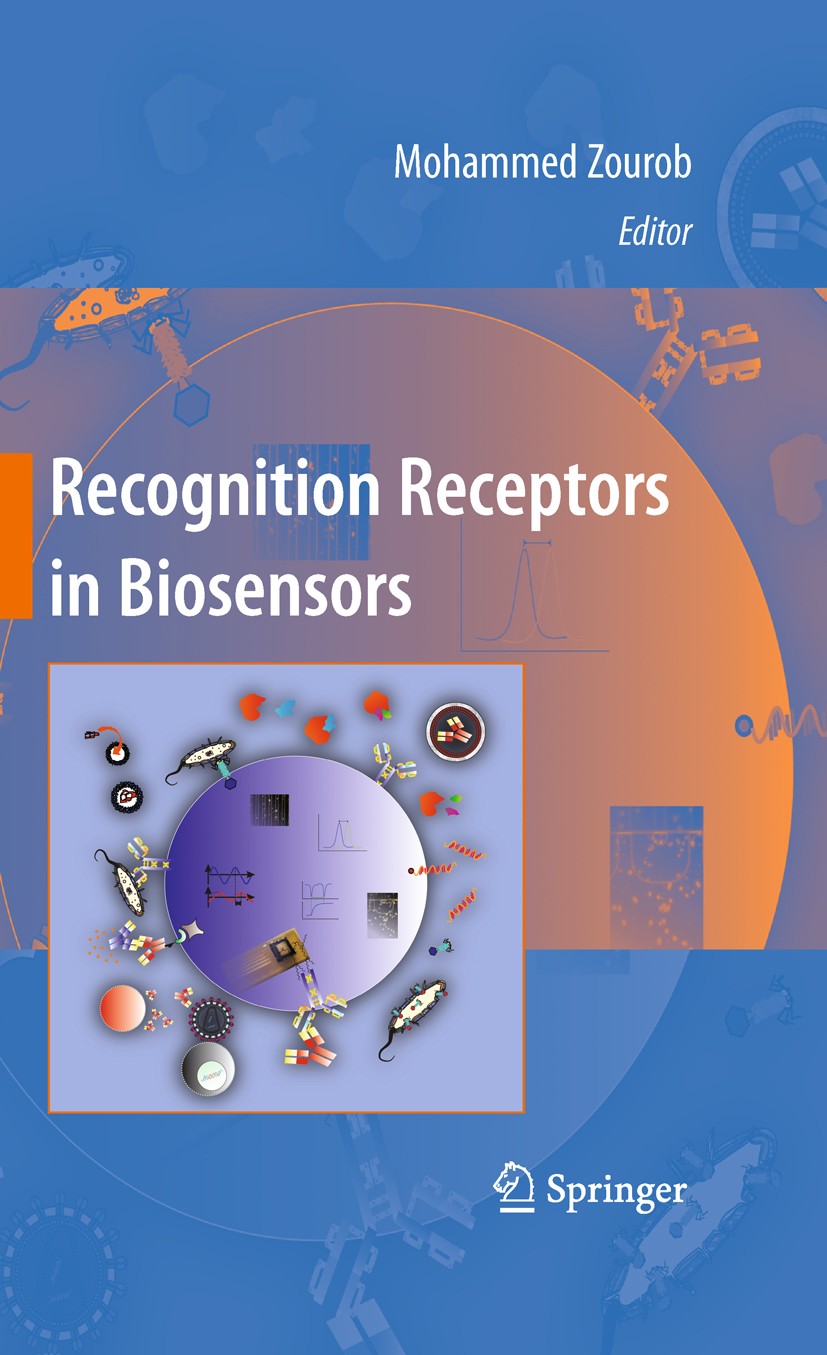| 書(shū)目名稱(chēng) | Recognition Receptors in Biosensors | | 編輯 | Mohammed Zourob | | 視頻video | http://file.papertrans.cn/825/824056/824056.mp4 | | 概述 | Includes supplementary material: | | 圖書(shū)封面 |  | | 描述 | Recognition receptors play a key role in the successful implementation of chemical and biosensors. Molecular recognition refers to non-covalent speci?c binding between molecules, one of which is typically a macromolecule or a molecular assembly, and the other is the target molecule (ligand or analyte). Biomolecular recognition is typically driven by many weak interactions such as hydrogen bo- ing, metal coordination, hydrophobic forces, van der Waals forces, pi-pi interactions and electrostatic interaction (due to permanent charges, dipoles, and quadrupoles) the polarization of charge distributions by the interaction partner leading to ind- tion and dispersion forces, and Pauli-exclusion-principle-derived inter-atomic repulsion, and a strong, “attractive” force arising largely from the entropy of the solvent and termed the hydrophobic effect. In recent years, there has been much progress in understanding the forces that drive the formation of such complexes, and how these forces are relate to the physical properties of the interacting molecules and their environment allows rational design of molecules and materials that interact in speci?c and desired ways. This book presents a sig | | 出版日期 | Book 2010 | | 關(guān)鍵詞 | Biomedical Engineering; Biophysics; Biosensor; Biosensors; Microarray; Peptide; Recognition Receptors; Zour | | 版次 | 1 | | doi | https://doi.org/10.1007/978-1-4419-0919-0 | | isbn_softcover | 978-1-4939-3940-4 | | isbn_ebook | 978-1-4419-0919-0 | | copyright | Springer-Verlag New York 2010 |
The information of publication is updating

|
|
 |Archiver|手機(jī)版|小黑屋|
派博傳思國(guó)際
( 京公網(wǎng)安備110108008328)
GMT+8, 2025-10-15 01:44
|Archiver|手機(jī)版|小黑屋|
派博傳思國(guó)際
( 京公網(wǎng)安備110108008328)
GMT+8, 2025-10-15 01:44


